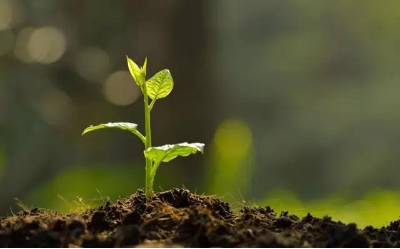These fertilizers are used in "minefields". How many have you stepped on?
Time:2023-01-31 Follow:955
Fertilizers play a huge role in promoting agricultural production and efficiency. Both chemical fertilizer, organic fertilizer and biological fertilizer have their own application mechanism. If used correctly, it will get twice the result with half the effort; Use the wrong way to get twice the result. In recent years, farmers tend not to pay attention to details in technology and use it based on experience. As a result, they have stepped into these misunderstandings step by step
Alert the "dark area" of biological fertilizer

① In order to improve fertilizer efficiency, some farmers often mix biological fertilizer with fungicides, pesticides, herbicides, etc., which is easy to kill biological bacteria.
Correct application method: if the application of bacterial fertilizer is inconsistent with the prevention of disease and insect pests and weeding, the bacterial fertilizer can be applied first, and then the weeding can be conducted after 48 hours. If seeds are mixed, do not mix them with seeds that have been mixed with fungicides. At the same time, it is also necessary to prevent mixing with uncooked farm manure, which will directly kill biological bacteria.
② A large amount of high concentration chemicals mixed with chemical fertilizers have toxic effects on microorganisms in the bacterial fertilizer, especially when mixed with alkaline fertilizers such as ammonium bicarbonate and physiological alkaline fertilizers such as sodium nitrate, they can kill a large number of microorganisms in the bacterial fertilizer.
Correct application method: For fields that have used chemical fertilizer for many years, biological bacterial fertilizer can not be applied in large quantities. Because crops are dependent on chemical fertilizer, biological bacterial fertilizer can not be used to replace nitrogen fertilizer at once. Therefore, its agent should replace 30%, 40% and 60% respectively in the first, second and third years. Phosphorus and potassium fertilizers can only be supplemented, not reduced.
③ There are many kinds of bacterial fertilizer mixed with different kinds of bacterial fertilizer, and the active bacteria contained in them are different. It is not clear whether there is mutual resistance between them. If they resist each other, it will reduce the fertilizer efficiency.
Correct application method: only one kind of biological bacteria fertilizer should be applied as far as possible. It is not suitable to apply multiple biological bacteria fertilizers containing different beneficial bacteria at the same time, and it is not necessary to change and apply different kinds of biological bacteria frequently.
Do not enter the "deep water zone" of chemical fertilizer

① Calcium magnesium phosphate fertilizer as topdressing calcium magnesium phosphate fertilizer is not easy to dissolve in water and the fertilizer effect is slow. As topdressing, especially after the middle period of crop growth, its utilization rate is low and the effect is poor.
Correct application method: calcium magnesium phosphate fertilizer can only be used as base fertilizer and organic fertilizer, which is also good for seed dressing.
② Direct seed dressing with superphosphate contains 3.5%~5% free acid, which is highly corrosive. Direct seed dressing will reduce the germination rate and seedling emergence rate of seeds.
Correct application method: for topdressing, the furrow should be deep applied. As seed fertilizer, it should be applied 5~6 cm below or on the side of the seeds, and the fertilizer should be separated from the seeds with soil.
③ Due to the serious "antagonistic effect" between zinc and phosphorus, the mixed application of zinc sulfate and superphosphate can largely inhibit the fertilizer effect of zinc sulfate and reduce its effectiveness.
Correct application method: zinc fertilizer and phosphorus fertilizer should be applied separately. Phosphate fertilizer should be used as base fertilizer, zinc fertilizer as seedling fertilizer, or zinc fertilizer as base fertilizer, phosphorus fertilizer as seedling fertilizer, which can improve the fertilizer efficiency of phosphorus and zinc fertilizer.
④ The "recrystallization" will occur soon after the borax is dissolved in the cold water, resulting in the precipitation of borax solution and the loss of fertilizer effect.
Correct application: first put the boron fertilizer into a hot water bottle, add boiling water to dissolve it, close the bottle stopper and take it to the field, and then cool the water to the required concentration, the effect will be greatly improved.
Beware of organic fertilizer "causing trouble"

① Excessive application of burnable seedlings will cause a large accumulation of phosphorus, potassium and other nutrients in the soil, resulting in soil nutrient imbalance. At the same time, nitrate ion in the soil is gathered, which causes nitrate in crops to exceed the standard, and the concentration of soil solution is high, which is not conducive to root water absorption.
Correct application method: The more organic fertilizer is applied, the better. Generally, 1000~1500 kg of green manure or 1000~1500 kg of green manure are applied per mu.
② The combination of organic and inorganic fertilizers is not sufficient for the nutrient content of organic fertilizers, but the content is low. In the vigorous growth period of crops, the application alone cannot fully meet the nutrient requirements of crops.
Correct application method: add an appropriate amount of ammonium carbonate or urea during application to adjust the carbon and nitrogen ratio and prevent the phenomenon of nitrogen competition between microorganisms and crops.
③ The uncooked fertilizer is decomposed and fermented in the soil by microorganisms, and the ammonia gas produced is easy to cause crop root burning and poisoning, and some will also breed weeds and spread diseases and pests.
The correct way to do this is to build a septic tank for fermentation, or pile up the compost and add water to wet it, and seal it with mud to make its temperature reach 35~40 ℃. After 25~30 days, the fermentation can be completed. The manure can be fully fermented at 60 ℃ to kill insect eggs and weed seeds, which is safer and more effective when used.
The article is from "Rural · Agriculture · Farmers" by Li Shishi




